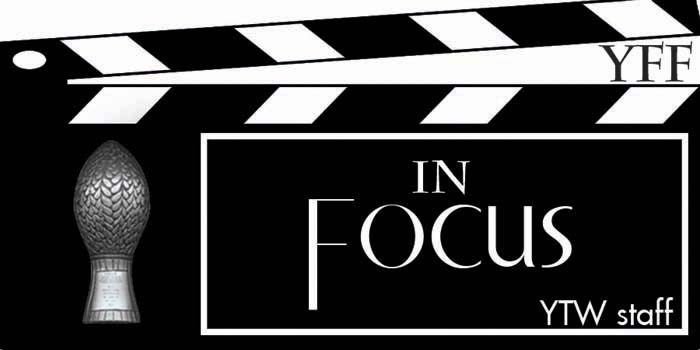Since we started this column, it has been a little heavy on National Film Board offerings. That is largely because the Board makes it very easy to view its catalogue by putting it all online for free.
It is also pretty legitimate, I think, to give the NFB plenty of attention. There would be no Yorkton Film Festival if it had not been for the NFB way back in the day. It continues to be a major supporter of and contributor to the local festival. And, it makes a lot of great films.
Last week, though, in an effort to give some other movies a fair shake, I went over to the Film Festival office and actually visited the physical archives, shelves upon shelves of DVDs and VHS tapes dating back to 1991.
After perusing a number of maybes, one spine piqued my interest. Secrets of the Dinosaur Mummy, it read. The title stood out like the analog equivalent of click bait. The subtitle went even further touting the find as “The Holy Grail of Paleontology Revealed” giving me pause that perhaps there was some overselling going on.
Still, it was about dinosaurs with a testimonial from Dr. Robert T. Bakker to boot. Bakker was a bit of a rebel in geology circles and a hero of mine back in my university days as one of the most outspoken advocates for birds being descendants of dinosaurs, something every four-year-old child now knows, but was still controversial when I was a student in 19-something-something.
Bakker’s quote on the jacket, “The best dinosaur film I’ve ever seen,” turns out to be a bit self-serving since he plays a rather significant role in the investigation chronicled by the documentary.
The film was uneven for me. Maybe it is because of my geology background, specifically in paleontology, that I prefer my dinosaur documentaries to be straight up scientific, but I found the narrative to be distractingly melodramatic full of “smoking guns” and “holy grails” and “mysterious forces” and the like. It was a little over the top for my taste. In fairness, my wife, a layperson when it comes to dinosaurs, quite liked that aspect of the film.
For me, it was a bit unfortunate, because “Leonardo,” the 77 million-year-old fossil of a juvenile Brachylophosaurus whose tale is told in this 45-minute 2008 Discovery Channel production is a fascinating specimen and the investigation conducted by Bakker et al is epic.
It begins with amateur fossil hunter Nate Murphy unearthing what would turn out to be not just the fossilized bones of a duck-billed dinosaur, but an almost complete cadaver. The preservation was unprecedented including skin, scales and muscle. Part of the animal’s stomach was also visible in a damaged section of the skeleton, leading scientists to believe that perhaps other internal organs had also been preserved.
But how to get at these without cutting the thing open and destroying one of the greatest fossil finds in history.
In Secrets of the Dinosaur Mummy, the filmmakers chronicle the five-year exploration of the fossilized remains using an escalating array of imaging technology from subjecting it to high intensity X-rays to blasting the six-ton rock with cobalt radiation at NASA’s Johnson Space Center, which had to be evacuated for the procedure.
Spoiler alert: They found what they were looking for, pretty much a complete set of internal organs including a bird-like crop in the young Brachylophosaurus’s throat, which, as in its modern counterparts, would have helped it digest its food. The researchers were also able to get an image of Leonardo’s last meal. The importance of such a find can hardly be overstated as it provides insight into the ecosystem of the western United States 77 million years ago.
How Leonardo became what he is today is also chronicled in the film using what would have, in 2008, been state of the art CGI, but now feels kind of dated. Still, the animated sequences are mercifully brief and adequately illustrate a likely death, burial and preservation scenario.
All in all, it is a fascinating tale, for the most part well told.




